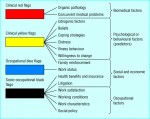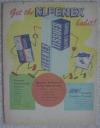There are a number of sites where you can do a PubMed search and display the results in interesting and sometimes quirky ways.
Here is a KNAKIJ search on low back pain[mh] AND laser therapy, low level[mh]. You can click on the circles and link to PubMed records.
Here are some of these visualizing sites:
- PubMed PubReMiner
PubReMiner is a front-end for the popular PubMed literature database at the NCBI. When you submit your query (which can be any query that can be processed by PubMed), PubReMiner will process the result of that query and display its results (in the form of selectable “keywords”) in frequency tables, which can be added/excluded from the query to optimize the results. - KNAKIJ – information visualization
KNALIJ PubMed: KNALIJ is a real-time infographic engine. The KNALIJ PubMed web application is built to visualize and explore the connections within medical research. KNALIJ PubMed draws upon more than 22 million abstracts as a unique knowledge discovery tool More - LigerCat: Literature and Genomics Resource Catalogue
Search PubMed using words or even a DNA/protein sequence to create a tag cloud showing an overview of important concepts and trends. LigerCat aggregates multiple articles in PubMed, combining the associated MeSH descriptors into a cloud, weighted by frequency. - Genes2WordCloud [Click on PUBMED SEARCH]
Create Word Clouds using PubMed searches Help
Filed under: Information Seeking, Keeping up to Date, Literature Searching, Web Resources / Search Tools | Comments Off on Visualizing PubMed




























